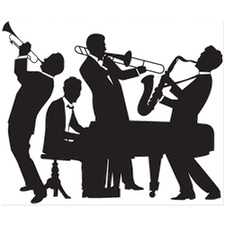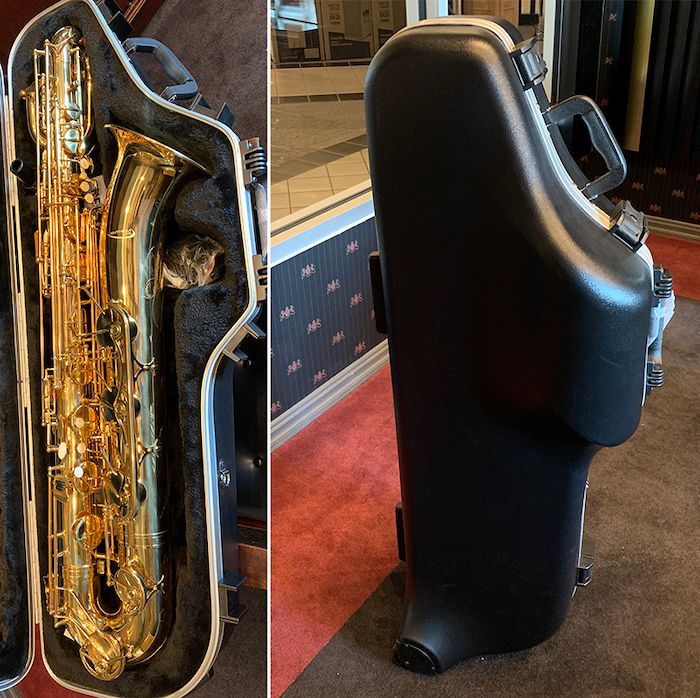Monday, February 24, 2020

There is one common struggle I've heard from many of you, and that is where to start when it comes to teaching or performing jazz music. Those of you that didn't play a "jazz instrument" never had the opportunity to be in a jazz ensemble, assuming your school had one. A "How to Teach and Play Jazz" class isn't the most common in universities either. However, none of those reasons should discourage you from starting your own jazz ensemble. Whether it be a swing version of "Jingle Bells" or an arrangement of "When the Saints Go Marching In", everyone from the flute down to the tuba should have the opportunity to perform jazz. This not only shows jazz is for everyone, but it also encourages interest in joining a jazz ensemble down the road. I am going to provide you with tips and materials that will aid you in teaching jazz music.
Instrumentation
The traditional instrumentation of a jazz big band is 5 saxophones, 4 trumpets, 4 trombones, piano, bass and drums. You may not always have rhythm section players in your concert band so don't be hesitant to invite students from the rest of the school to audition. When it comes to drums you want to make sure you have at least a 4-piece set (snare, two toms, bass drum) and cymbals. If you are low on certain instruments encourage your students to learn a secondary instrument. Students eager to be in a jazz ensemble are also the ones who are willing to learn a second instrument. I myself was a baritone player who wanted to be in jazz band so I learned bass guitar and trombone.
Method Books
There are some great method books for teaching jazz music. You don't have to have a jazz band in order for your students to perform jazz music. It not only helps students be more artistic with their playing but it also builds confidence in their instrument. Here is a list of some method books that will aid you in teaching jazz music:
- Essential Elements for Jazz Ensemble This method book focuses on basic jazz styles, includes jazz history and people, teaches improvisation using two measure phrases, and includes seven full band arrangements. It includes all instrumentation you find in a beginning concert band and has piano, bass, drum and guitar parts also available. What's great about this book is you do not need a full rhythm section to perform the music. The tuba part doubles the bass part and you can use concert percussion in place of a drum set. This is a fantastic method book for students who have been playing for one to two years.
- The Best of Essential Elements for Jazz Ensemble This method book contains 15 arrangements for a beginning jazz band. These grade 1.5 arrangements are a perfect "next step" when using the Essential Elements for Jazz Ensemble method book. It can be played with as little as 3 saxes, 2 trumpets, 1 trombone and rhythm section or as many as 5 saxes, 3 trumpets, 3 trombones and rhythm section. There are also flute, clarinet, french horn and tuba books available allowing you to have your entire concert band play these arrangements.
- Jamey Aebersold Volume 1: How to Play Jazz & Improvise This is the first book I recommend to any of my students when they are ready to work on improvisation. Jamey Aebersold is a jazz educator who has developed a multitude of play-along method books for improvisation. What I personally love about the first volume is it focuses on the "modal" approach of playing, meaning instead of multiple chord changes over many measures it focuses on one chord change. This allows for your students to work on one chord when they are just getting into improvisation. The method book focuses on scales, improvisation fundamentals, time and feel, patterns/licks and includes 2 play-along CD's. This is a must for anyone wanting to learn improvisation.
Listening
You can't expect your students to be able to perform jazz if they have never listened to it. Listening is one of the most important tools you should use as a musician. Anytime you present a piece for your students to play, find some recordings of popular jazz musicians performing the same tune. It's even better if it ISN'T a note-for-note recording of your arrangement as jazz is never meant to be played the same way twice. The more you share with your students the more comfortable they will become with the style and feel of jazz music.
You too should practice jazz
This all comes back to the educator. How can one expect to teach jazz music if you yourself haven't done it? All of the method books I suggested come with play-along tracks, meaning you can work on playing jazz from your office or your home. This can be done on your main instrument or on a secondary instrument. Use this as a way to challenge yourself to become more competent on a secondary instrument. You do not have to be a well accomplished jazz musician in order to teach it.
Teaching jazz music should be fun and exciting not only for your students but also for you. It will help you grow in a way you may have never experienced before and will allow your students to expand on their own personal musicianship. All of the books I mentioned can be purchased through your educational representative. If you have any questions at all please don't hesitate to reach out to me.
 | Austin Wilson has experience in the music industry as a performer and an educator. He graduated with a Bachelor in Music Education from Missouri State University in 2014. Austin is one of the most in demand bassists in Missouri and has shared the stage with the likes of Joan Rivers, Shirley Jones, Billy Yates, Michael Feinstein and the Lennon Brothers. From 2015 - 2018 Austin was the bassist for the Tony Award Winning Musical "The Million Dollar Quartet" in Branson, MO. His private euphonium studio has had numerous students receive high honors in the Missouri All-State concert band and the Missouri Solo and Ensemble Festival. Austin has held the position of education representative for Palen Music since 2019. |

At the same time I was asked to write an article on a string topic, I attended a concert featuring a well-known pop artist. Accompanied by a symphonic orchestra and rhythm section, the string arrangements from the 1950's washed over me like a wave. I grew up watching weekly televised orchestra performances. Today, string sections are seen on late shows, voice competitions, and aired specials. Strings are beautiful. They're what we love about lush movie scores. Every genre of music has its own history and every style speaks differently. Respecting those differences matter in the ability to perform the music properly. It's easy today to listen to multiple performances of the same work by various artists. From classical performers flawless in concert halls to fiddlers who know their instrument so well that positions are friendly tools ("Why don't you play that in 2nd; it's a lot easier") transposing effortlessly to any key. Jazz violins or a rock cello line become another voice through musical choices or improvised solos. Rules vary also. Seeing consecutive down bows in classical literature moves one to the frog for a heavy determined sound, while two down bows that "kick off" a country song are played down, down staccato. I've seen players grab a pencil saying "Let's do that down, up. No. Down, down is the sound", and taking a pencil to charts that have traveled the road marked by original members (and should be mostly left alone.)
While accents in classical literature are strictly observed, accents in "The Orange Blossom Special" give it its familiar tune with added string crossings and double stops. As a classically-trained violinist, I played with a country artist whose road band opened every show. When it was time for him to take the stage the string section entered first, took our place, and played him on. He reserved us for himself and his memorable ballads. Cam Mullins' beautifully-written arrangements for strings became his signature sound. The string section was controversial at the time because of its bold move from traditional country, but he and his music are legendary. Play and learn from everyone. Yo-Yo Ma is a perfect example. I'm determined to listen for strings -- the horizontal line in a sometimes vertical musical world. A beautiful contribution to our soul where music moves us -- like waves.
| Tina Sibley lives in her hometown, Springfield Missouri with her son Captain. She spent her teaching career directing high school orchestra, playing in the symphony/local theatre, and working as a studio musician. She currently works with Silver Dollar City Entertainment and continues to write, arrange, and perform in the Springfield/Branson area. |

We have an Anthem baritone saxophone that we received as a demo. It is brand new and has never been owned. It has been played by a few people as a demo and we are selling it as a special price for the first customer that provides payment or a PO number. The instrument comes in a heavy-duty SKB molded case on wheels. The instrument is a low-A baritone saxophone and we have had great results with this instrument. We are able to offer this particular demo instrument at a special price of $2,200. Ready to jump in? Just email ematzat@palenmusic.com to secure this deal.

| (417) 882-7000 | (573) 256-5555 | (816) 792-8301 |
| (417) 781-3100 | (405) 896-8111 | (479) 464-8877 |
| (918) 286-1555 | (636) 229-1904 | (417) 882-7000 |
